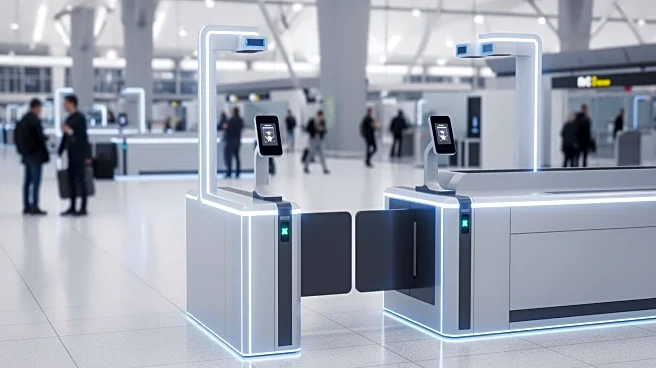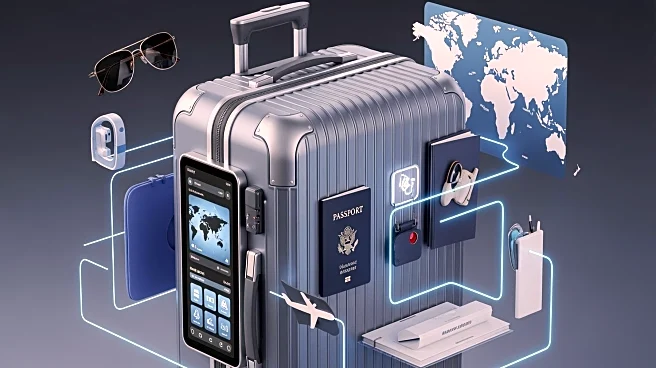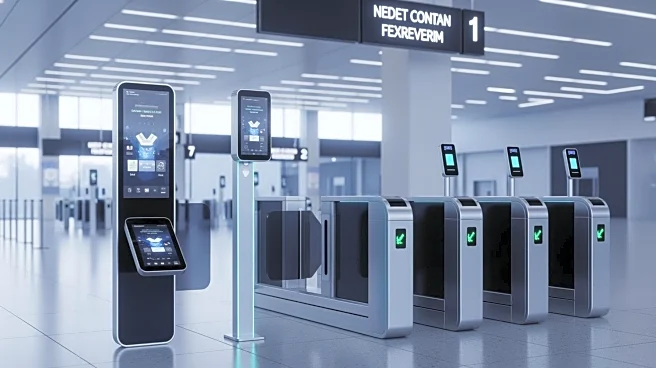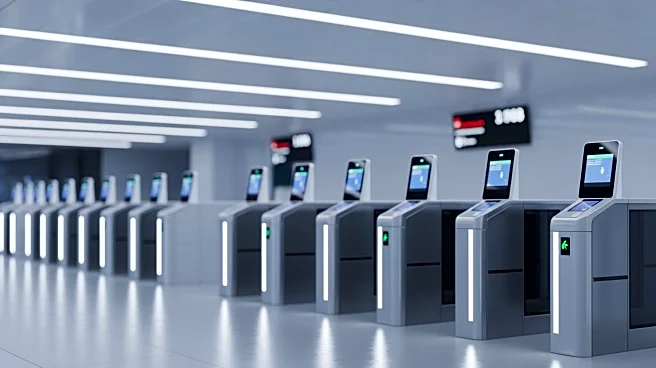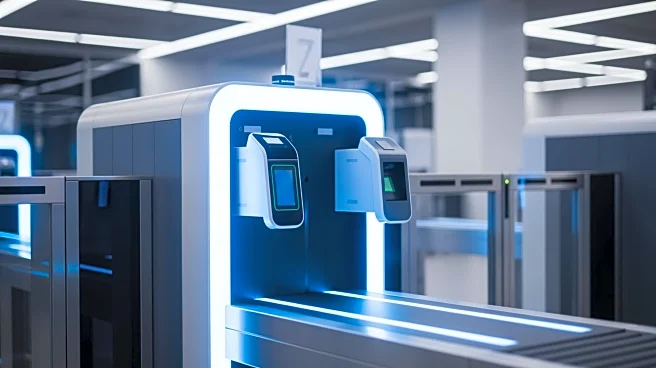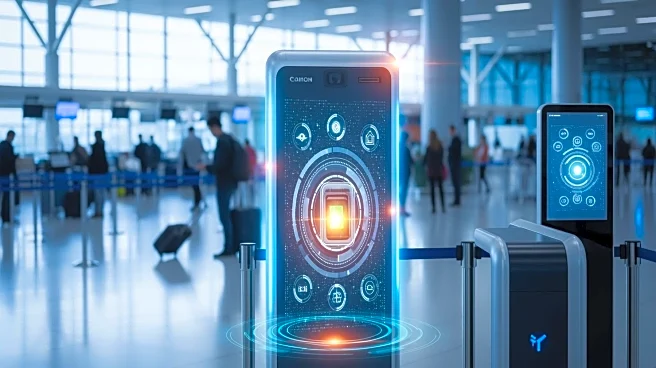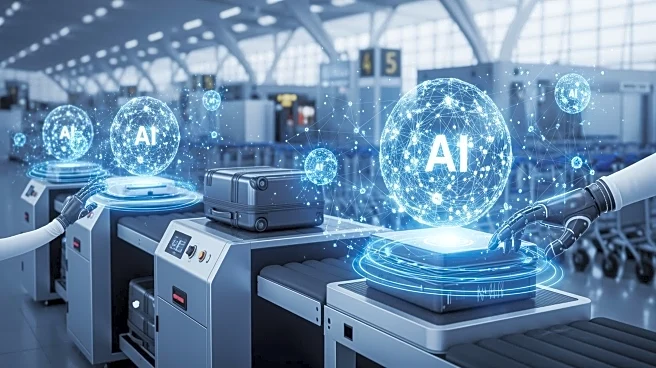What's Happening?
Biometric technology at airports, once met with fear and skepticism, is now preferred by travelers, according to a report by Sita. The report highlights a significant increase in comfort levels with biometric screenings, with 79% of passengers expressing
acceptance in 2025, up from 74% in 2024. The technology is particularly popular among younger travelers, men, and frequent flyers. Biometric identification is used for various purposes, including accessing mobile phones and workplaces, contributing to its growing acceptance. The report surveyed 7,500 passengers at airports in 25 countries, indicating a global trend towards biometric solutions in travel.
Why It's Important?
The growing acceptance of biometric technology in airports reflects a broader shift towards digital identity solutions in travel. This trend can enhance security and streamline processes, reducing wait times and improving passenger experience. As travelers become more comfortable with sharing their digital identities, airports can leverage biometric technology to offer more efficient and personalized services. However, the adoption of biometrics also raises privacy concerns, necessitating robust data protection measures to safeguard personal information.
What's Next?
Airports are likely to continue expanding the use of biometric technology, integrating it into more aspects of the travel experience. This could include further automation of check-in and boarding processes, as well as enhanced security screenings. As biometric solutions become more widespread, airports will need to address privacy concerns and ensure compliance with data protection regulations. The trend towards biometric technology may also influence other sectors, as businesses seek to offer more secure and convenient services.
Beyond the Headlines
The adoption of biometric technology in airports highlights the intersection of convenience and privacy in the digital age. While the technology offers numerous benefits, it also raises ethical questions about data collection and surveillance. As biometric solutions become more prevalent, ongoing dialogue and transparency will be essential to address public concerns and build trust in these technologies.
